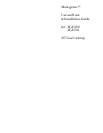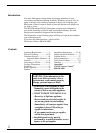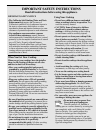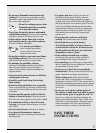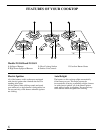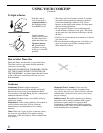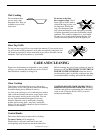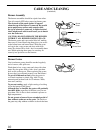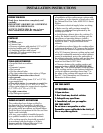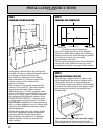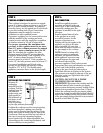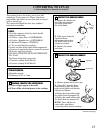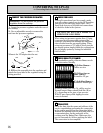
5
• Do not store flammable materials near the
cooktop. Do not store or use gasoline or other
flammable vapors and liquids in the vicinity of
this or any other appliance.
• Do not let cooking grease or other
flammable materials accumulate
on or near the cooktop.
• Never leave the surface burners unattended
at high flame settings. Boilovers cause smoking
and greasy spillovers that may catch on fire.
• Adjust surface burner flame size so it does
not extend beyond the edge of the cookware.
Excessive flame is hazardous.
• Use only dry pot holders—
moist or damp pot holders
on hot surfaces may result
in burns from steam.
• Do not let pot holders come near open flames
when lifting cookware. Do not use a towel or
other bulky cloth in place of a pot holder.
• To minimize the possibility of burns,
ignition of flammable materials and spillage,
turn cookware handles toward the side or
center of the cooktop without extending over
adjacent burner.
• Always turn the surface burners to off before
removing the cookware.
• Carefully watch foods being fried at high
flame setting.
• Foods for frying should be as dry as possible.
Frost on frozen foods or moisture on fresh foods
can cause hot fat to bubble up and over the sides
of the pan.
• Use least possible amount of fat for effective
shallow or deep-fat frying. Filling the pan too
full of fat can cause spillovers when food is added.
• If a combination of oils or fats will be used
in frying, stir together before heating, or as fats
melt slowly.
• Always heat fat slowly, and watch as it heats.
• Use a deep fat thermometer whenever
possible to prevent overheating fat beyond the
smoking point.
• Use proper pan size—Avoid pans that are
unstable or easily tipped. Select cookware
having flat bottoms large enough to properly
contain food and avoid boilovers and spillovers,
and large enough to cover burner grate. This will
both save cleaning time and prevent hazardous
accumulations of food, since heavy spattering or
spillovers left on cooktop can ignite. Use pans
with handles that can be easily grasped and
remain cool.
• Do not place hot cookware on the glass
cooktop. This could cause glass to break.
• Keep all plastics away from burners.
• To avoid the possibility of a burn, always be
certain that the controls for all burners are at
the off position and all grates are cool before
attempting to remove a grate.
• If the cooktop is located near a window,
do not hang long curtains which could blow
over the burners and create a fire hazard.
• If you smell gas, turn off the gas to the cooktop
and call a qualified service technician. Never use
an open flame to locate a leak.
• Do not cover or block the area around the
cooktop knobs. This area must be kept clear for
proper ventilation and burner performance.
• When cooking pork, follow the directions
exactly and always cook the meat to an internal
temperature of at least 170°F. This assures that, in
the remote possibility that trichina may be present
in the meat, it will be killed and the meat will be
safe to eat.
• Do not use a wok on the cooking surface if
the wok has a round metal ring which is placed
over the burner grate to support the wok. This
ring acts as a heat trap which may damage the
burner grate and burner head. Also, it may cause
the burner to work improperly. This may cause a
carbon monoxide level above that allowed by
current standards, resulting in a health hazard.
SAVE THESE
INSTRUCTIONS



